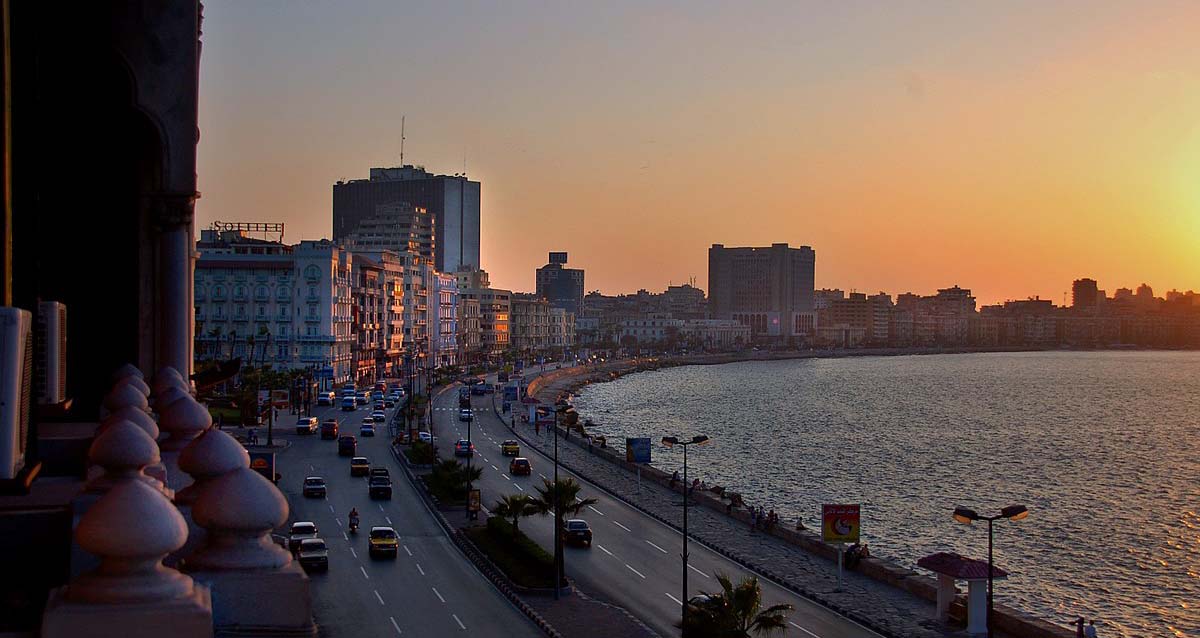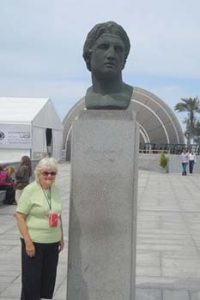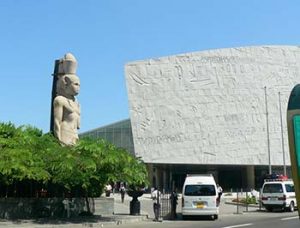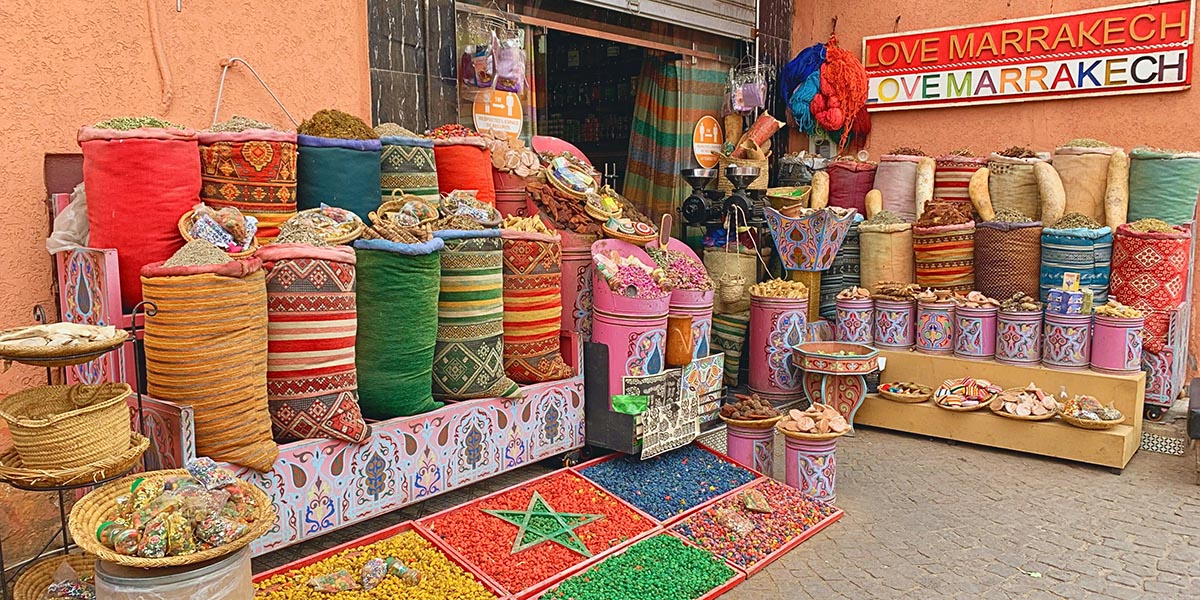
Start a family adventure in the desert beyond Marrakech. Explore the busy medina, where old buildings and lively markets catch your eye. Enjoy tasty tagine dishes at shared meals, and practice haggling in colorful markets.
Travel through the beautiful Atlas Mountains and be amazed by the stunning cliffs of Todgha Gorges. Discover the pretty rose valleys and visit the ancient kasbah at Ait Ben Haddou.
Go deep into the Sahara for an unforgettable night in a traditional camp under the stars. There’s so much more to explore on this exciting desert tour.
Exploring Marrakech Medina
Walking through Marrakech Medina, you’ll find a UNESCO World Heritage Site full of historic buildings and lively markets.
Start your visit by seeing the Saadian Tombs, where you’ll be amazed by the detailed carvings and tombs.
Then, check out the grand El Badii Palace, which used to be a fancy royal home. For a quiet break, go to Jardin Majorelle, a peaceful garden.
As you explore the Medina, the busy markets will grab your attention with their colorful stalls and fun atmosphere. You’ll be entertained by street performers who play music and do acrobatics.
Make sure to try traditional Moroccan food at the cute cafes around the area, making your visit truly unforgettable.
Traditional Moroccan Cuisine
You’ll love the tasty flavors of traditional Moroccan food. Starting with the famous tagine dishes that are cooked with delicious spice mixes.
The special blend of spices makes a mix of tastes that will make you want more. Be sure to try these yummy dishes if you’re taking luxury desert tours from Marrakech.
Flavorful Tagine Dishes
When you explore traditional Moroccan cuisine, tagine dishes stand out for their rich, complex flavors and cultural importance.
These meals, cooked in a cone-shaped clay pot, are a must-try during any family trip to Marrakech.
Popular types include chicken with preserved lemons and olives, lamb with apricots and almonds, and hearty vegetable tagines.
The slow-cooking method blends the ingredients perfectly, creating a mix of sweet and savory tastes that will delight your taste buds.
Sharing a tagine meal is more than just eating, it’s a cultural experience that brings everyone together around a communal table.
It’s a tasty journey through Morocco’s food culture, great for making unforgettable family memories.
Aromatic Spice Blends
Discover the amazing flavors of Moroccan food with spice blends like Ras el Hanout, Baharat, and Harissa. These spices make dishes taste incredible.
After an exciting day in the desert riding camels and quads, you’ll enjoy a lunch that feels like an adventure.
Ras el Hanout, made with more than 20 spices, will make your meal special as you look at the Atlas Mountains.
Baharat’s warm spices, like cinnamon and nutmeg, make both savory and sweet dishes unforgettable.
Harissa, a spicy chili paste, adds a kick if you like bold flavors. These spices make your meal as thrilling as your desert adventures.
Shopping in Bustling Markets
Walking through Marrakech’s busy markets, you’ll find a lot of traditional Moroccan goods and crafts, perfect for any shopper.
These colorful markets are filled with spices, leather items, fabrics, ceramics, and unique souvenirs. Each stall shows a bit of Morocco’s rich culture and skills.
Don’t forget to practice your bargaining skills; haggling is an important part of the shopping experience here.
In the evenings, Jemaa el-Fnaa Square turns into a lively market, where you can enjoy street food and watch performers.
Exploring these markets lets you experience the local way of life, making your shopping trip both fun and culturally interesting.
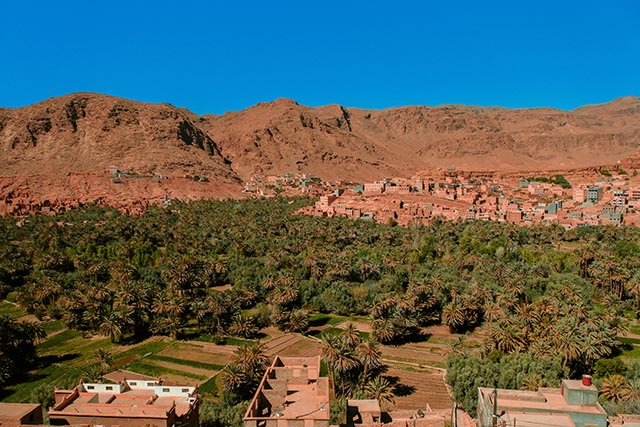
Journey Through the Atlas Mountains
As you travel through the Atlas Mountains, you’ll cross the amazing Tizi N’Tichka pass, which has stunning views and is an exciting drive.
This beautiful route through the High Atlas Mountains shows you Morocco’s different landscapes and rich culture.
In the sweet-smelling Rose Valley, you’ll see blooming roses and pretty scenery.
Keep going through the Middle Atlas Mountains, where you’ll find charming villages and varied terrain.
Make sure to visit Ait Ben Haddou, a UNESCO World Heritage Site known for its well-preserved kasbah and historical importance.
Each stop brings you closer to the unique culture and natural beauty of the Atlas Mountains, making your trip an unforgettable experience.
Marveling at Todgha Gorges
When you look at the amazing rock formations of Todgha Gorges, you’ll find exciting hiking trails that take you through this natural wonder.
The tall limestone walls aren’t just a sight to see but also teach you about the local Berber culture.
Take a moment to enjoy the calm atmosphere and green palm oases around you.
Breathtaking Rock Formations
The Todgha Gorges are located in the eastern High Atlas Mountains. These amazing rock formations are really tall, reaching up to 985 feet high.
When you visit this natural wonder, you’ll be amazed by the huge canyon walls that nature has carved over thousands of years.
This beautiful place is perfect for outdoor activities and is especially popular with rock climbers from all over the world.
The narrow gorge makes a stunning backdrop for your adventures.
Whether you’re climbing the cliffs or just enjoying the awesome views, the Todgha Gorges will give you an unforgettable experience.
The dramatic landscapes and tall rock formations make this a must-see place on your Marrakech Desert Tour.
Thrilling Hiking Trails
The Todgha Gorges offer some of the most exciting hiking trails in the area.
As you walk, you’ll go through narrow canyons made by the Todgha River, with the tall cliffs of the High Atlas Mountains all around you.
Rock climbers come here because the climbing paths are tough and the views are amazing. You’ll see cool rock shapes that make each step fun.
At the bottom of the gorges, there’s a green oasis that feels refreshing compared to the rocky land.
Exploring these trails lets you learn about the local Berber culture too, which makes your adventure even more interesting.
It’s an experience that every hiker will remember.
Local Berber Culture
Experience the lively Berber culture around the Todgha Gorges, where you can see traditional Moroccan life in the nearby villages.
Located in the High Atlas Mountains of Morocco, the Todgha Gorges offer more than just beautiful views.
You can visit the local Berber villages to see how people live and maybe even join in their daily activities.
Merzouga Desert Experience
When you visit the Merzouga Desert, you’ll be amazed by its beautiful sand dunes and the many fun activities you can do.
You can start with a family-friendly desert tour and ride camels across the golden sands of the Sahara Desert.
Feel the excitement of riding quadbikes as you zoom through the big dunes.
After a day of fun, you can relax at a luxury camp in the middle of the Merzouga desert.
Here, you can learn about the local culture by meeting nomadic families and enjoying traditional Gnawa music.
The Merzouga Desert offers a great mix of adventure and learning about new cultures, making it an unforgettable experience for the whole family.
Overnight in a Sahara Camp
Stay in a magical desert camp and spend a night under the stars in the Sahara Desert. On your trip from Marrakech, you’ll stay in a camp that mixes comfort and tradition.
Enjoy Berber culture with their music, dance, and food. The camp is both fancy and traditional.
In the morning, you’ll see amazing desert views and feel peace. Try fun desert activities like riding camels and sandboarding.
At night, look up and see the beautiful, clear sky full of stars. Your night at the Sahara camp will be an unforgettable adventure filled with culture.
Wrapping Up
After you leave the golden sands and busy streets of Marrakech, you feel deeply connected to Morocco’s rich culture. Did you ever think such different adventures could be in one trip?
From the crowded Medina to the peaceful Sahara, you’ve made amazing family memories. This isn’t just a trip, it’s a story you’ll remember forever.
So, what’s your next adventure? The world is waiting.
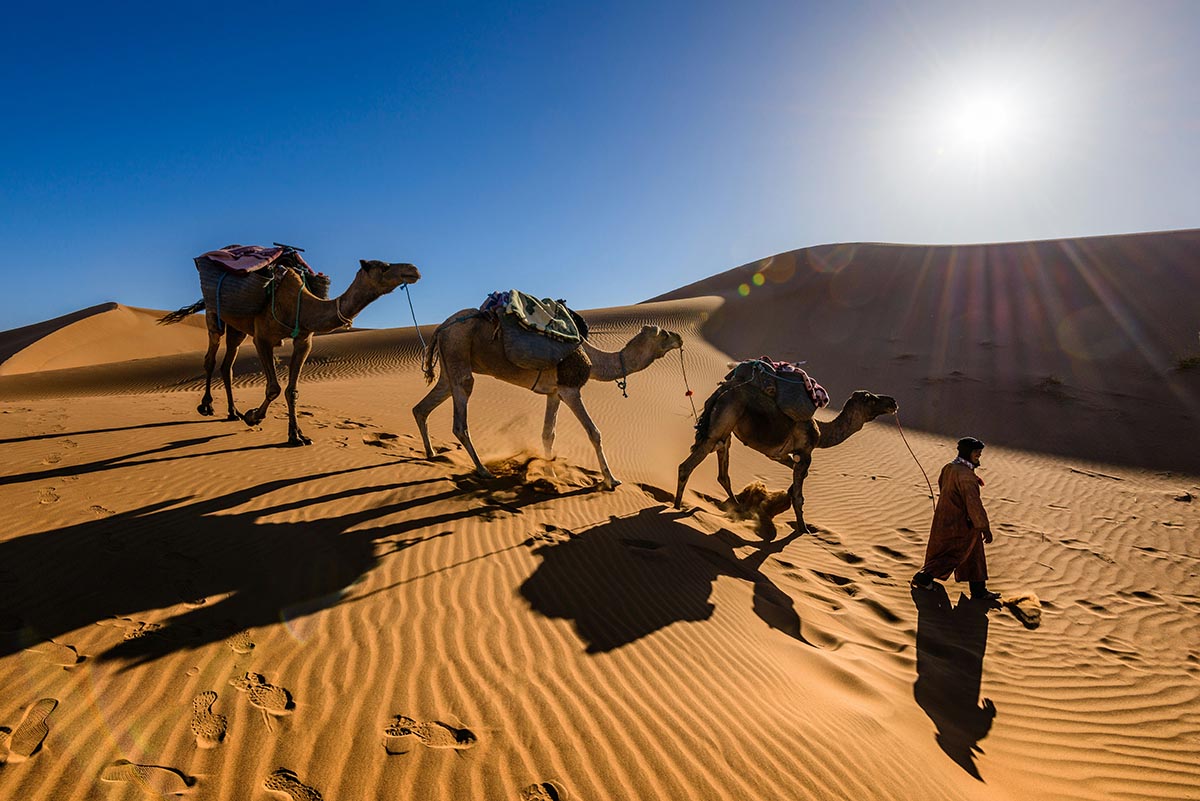
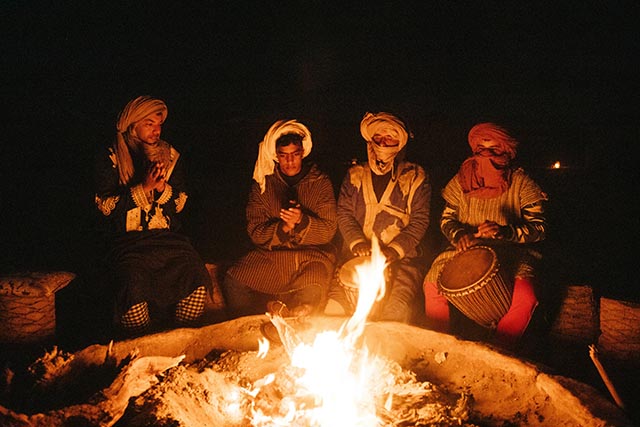




 Sarah Wilder is a wildlife enthusiast with a passion for writing. She has spent more than ten years traveling around Africa and has a great appreciation for the animals and people of this fascinating and stunning continent. When she’s not traveling, Sarah is writing for
Sarah Wilder is a wildlife enthusiast with a passion for writing. She has spent more than ten years traveling around Africa and has a great appreciation for the animals and people of this fascinating and stunning continent. When she’s not traveling, Sarah is writing for 










